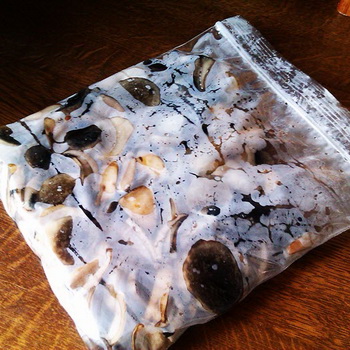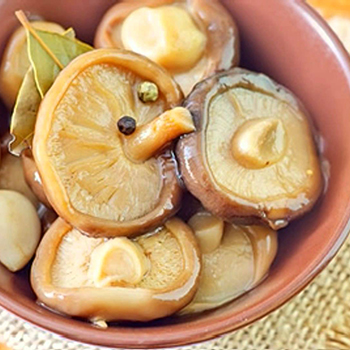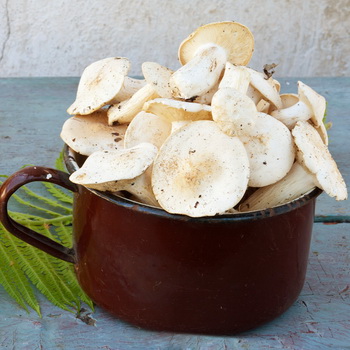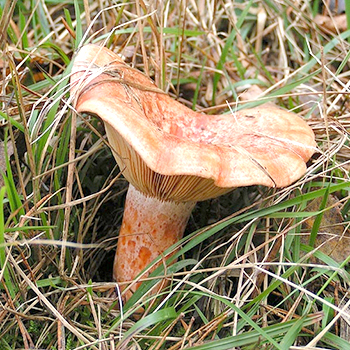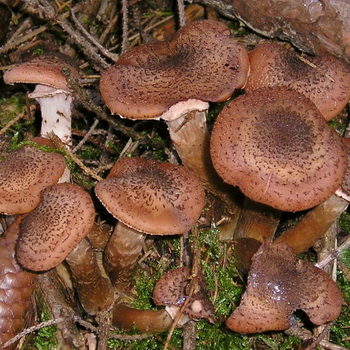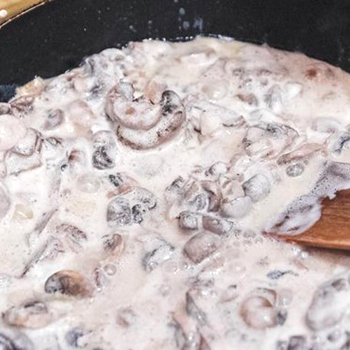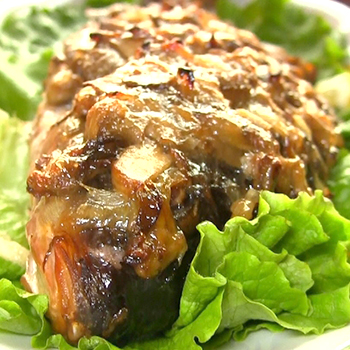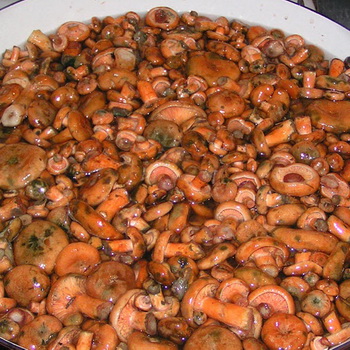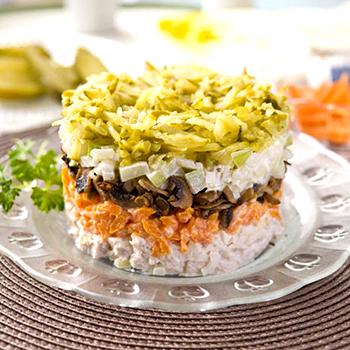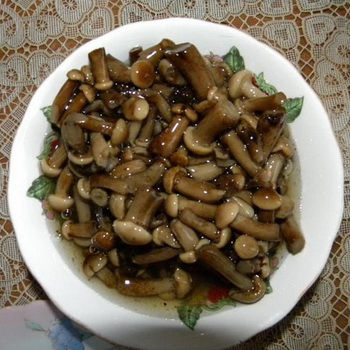Mushrooms similar to white milk mushrooms: photos and all varieties with descriptions
 Very often in the forest you come across a mushroom that looks like a white lump, but in fact has nothing to do with it. Moreover, this species can pose a serious threat to human health and life.
Very often in the forest you come across a mushroom that looks like a white lump, but in fact has nothing to do with it. Moreover, this species can pose a serious threat to human health and life.
We propose to learn about all the varieties of mushrooms that look like white milk mushrooms and read their full characteristics in order to know which of them are conditionally edible and which are deadly poisonous. This information will help to avoid mistakes during the forest "quiet hunt" and will protect you from unintentional poisoning. So, read about what mushrooms are similar to white milk mushrooms and by what signs they can be distinguished in the field without special equipment.
Be sure to look at a mushroom that looks like a white milk mushroom in the photo and remember that you cannot take it in any case, since it is very poisonous.

Real milk (white)
 A real white lump grows in birch forests and mixed forests with an admixture of birch. It is rather rare, but sometimes in large groups, from July to October. The cap is large, up to 20 cm in diameter, in young mushrooms, white, rounded-convex, then funnel-shaped, with a furry edge tucked down, white or slightly yellowish, often with faintly noticeable watery concentric stripes. In damp weather, it is slimy, for which this mushroom is called "raw weight". The pulp is white, firm, brittle, with a spicy odor. Milky juice is white, acrid, bitter in taste; in the air it becomes sulfur-yellow. The plates descending along the pedicle, white or cream, with a yellowish margin, wide, sparse. The stem is short, thick, naked, white, sometimes with yellowish spots, in mature mushrooms it is hollow inside. Conditionally edible, first category. Used for pickling, less often for pickling. Salted milk mushrooms have a bluish tint.
A real white lump grows in birch forests and mixed forests with an admixture of birch. It is rather rare, but sometimes in large groups, from July to October. The cap is large, up to 20 cm in diameter, in young mushrooms, white, rounded-convex, then funnel-shaped, with a furry edge tucked down, white or slightly yellowish, often with faintly noticeable watery concentric stripes. In damp weather, it is slimy, for which this mushroom is called "raw weight". The pulp is white, firm, brittle, with a spicy odor. Milky juice is white, acrid, bitter in taste; in the air it becomes sulfur-yellow. The plates descending along the pedicle, white or cream, with a yellowish margin, wide, sparse. The stem is short, thick, naked, white, sometimes with yellowish spots, in mature mushrooms it is hollow inside. Conditionally edible, first category. Used for pickling, less often for pickling. Salted milk mushrooms have a bluish tint.
White mushrooms, similar to milk mushrooms (with photo)
 There are various white mushrooms, similar to milk mushrooms, and it is important to be able to recognize them by the smallest differences. They confuse white milk mushrooms, of course, with violins - dry hard porcini mushrooms, like two drops of water similar to white milk mushrooms. Mycologists also cannot come to an agreement - in this family of mushrooms, someone else allocates a white aspen mushroom (although this is the same violin that grows in symbiosis with aspens, like the boletus), someone else allocates a white mushroom. In general, confusion. With edibility - too. Dear authors are completely confused, they gave the violin a conditional edibility, but the aspen mushroom, in their opinion, turns out to be inedible.
There are various white mushrooms, similar to milk mushrooms, and it is important to be able to recognize them by the smallest differences. They confuse white milk mushrooms, of course, with violins - dry hard porcini mushrooms, like two drops of water similar to white milk mushrooms. Mycologists also cannot come to an agreement - in this family of mushrooms, someone else allocates a white aspen mushroom (although this is the same violin that grows in symbiosis with aspens, like the boletus), someone else allocates a white mushroom. In general, confusion. With edibility - too. Dear authors are completely confused, they gave the violin a conditional edibility, but the aspen mushroom, in their opinion, turns out to be inedible.
 They are very similar to real yellow milk mushrooms. They have approximately the same size, the edges of the caps are also pubescent and rolled down. They are also similar in taste. Only have an intense yellow color. Grows mainly in birch, less often in coniferous forests. Occurs singly or in groups from July to October. A large mushroom, in appearance and size, it is similar to a real milk mushroom, but differs from it in color. It has a golden yellow cap with slightly pronounced dark concentric zones and a shaggy edge rolled down, first rounded-convex, then funnel-shaped. The flesh of the mushroom is white, yellow from touch and at the break. In case of damage, it secretes white milky juice, acrid, in dry weather, yellowing in air. The leg is short, narrowed downward, pale yellow, with dark spots, mucous. Conditionally edible, of the first category, it is used for pickling and pickling. The taste is not inferior to the real milk mushroom.
They are very similar to real yellow milk mushrooms. They have approximately the same size, the edges of the caps are also pubescent and rolled down. They are also similar in taste. Only have an intense yellow color. Grows mainly in birch, less often in coniferous forests. Occurs singly or in groups from July to October. A large mushroom, in appearance and size, it is similar to a real milk mushroom, but differs from it in color. It has a golden yellow cap with slightly pronounced dark concentric zones and a shaggy edge rolled down, first rounded-convex, then funnel-shaped. The flesh of the mushroom is white, yellow from touch and at the break. In case of damage, it secretes white milky juice, acrid, in dry weather, yellowing in air. The leg is short, narrowed downward, pale yellow, with dark spots, mucous. Conditionally edible, of the first category, it is used for pickling and pickling. The taste is not inferior to the real milk mushroom.
Aspen milk
 Aspen mushroom grows in damp aspen and poplar forests. Occurs rarely, singly or in groups, from July to October.The cap is up to 20 cm in diameter, first convex, then funnel-shaped, with fringed edges curled downwards, off-white with pinkish or watery concentric zones, mucous in damp weather. The pulp is white, without a noticeable odor and pungent taste. Milky juice is white, unchanged in air. Plates descending along the pedicle, whitish or slightly pinkish, very frequent. The leg is short, thick, dense, narrowed downward, powdery in the upper part, white or of the same color as the cap. Conditionally edible, second category. Suitable only for salting.
Aspen mushroom grows in damp aspen and poplar forests. Occurs rarely, singly or in groups, from July to October.The cap is up to 20 cm in diameter, first convex, then funnel-shaped, with fringed edges curled downwards, off-white with pinkish or watery concentric zones, mucous in damp weather. The pulp is white, without a noticeable odor and pungent taste. Milky juice is white, unchanged in air. Plates descending along the pedicle, whitish or slightly pinkish, very frequent. The leg is short, thick, dense, narrowed downward, powdery in the upper part, white or of the same color as the cap. Conditionally edible, second category. Suitable only for salting.
Pepper milk

 Peppermilk grows in deciduous forests with an admixture of oak and birch. Occurs in July - October quite often and in large groups. The whole mushroom is white at first, then with a yellowish tinge. The cap is up to 20 cm in diameter, fleshy, dense, at first flat, with a curled edge, then funnel-shaped, matte, dry. The pulp is white, on the cut it becomes bluish-blue, spicy-peppery taste. Milky juice is abundant, white, turns blue in the air. The plates are white or creamy, very frequent, narrow, descending along the pedicle. Stem is short, dense, smooth, white, sometimes with depressed spots. Conditionally edible, fourth category. Used for salting and pickling after boiling.
Peppermilk grows in deciduous forests with an admixture of oak and birch. Occurs in July - October quite often and in large groups. The whole mushroom is white at first, then with a yellowish tinge. The cap is up to 20 cm in diameter, fleshy, dense, at first flat, with a curled edge, then funnel-shaped, matte, dry. The pulp is white, on the cut it becomes bluish-blue, spicy-peppery taste. Milky juice is abundant, white, turns blue in the air. The plates are white or creamy, very frequent, narrow, descending along the pedicle. Stem is short, dense, smooth, white, sometimes with depressed spots. Conditionally edible, fourth category. Used for salting and pickling after boiling.
Violinist


Skrypitsa is quite often found in coniferous and deciduous forests of the middle zone, in large groups, from mid-June to mid-September. A hat with a diameter of up to 20 cm, initially flat-convex, depressed in the middle, with a curled edge. Later it becomes funnel-shaped with a wavy, often cracked edge. The surface is dry, slightly pubescent, pure white, later slightly buffy. The plates are sparse, whitish or yellowish. Leg up to 6 cm long, thick, somewhat narrowed at the base, solid, white. The pulp is coarse, dense, white, later yellowish, with abundant white pungent-acrid milky juice.
The collected mushrooms in the basket rub against each other and emit a characteristic creak.
For this they were called "violinists", "squeaks". Mushroom pickers do not always take these mushrooms, although they are used for salting, becoming strong and acquiring a mushroom smell. The fungus turns white with a bluish tinge and creaks on the teeth.
A poisonous mushroom that looks like a white lump

A poisonous mushroom that looks like a white milk mushroom is a gray-pink milky and it is absolutely inedible, deadly to humans.
The hat is 4-12 cm in diameter, densely fleshy, convex or flat-spread to funnel-shaped, sometimes with a tubercle, at first with a bent edge, and later with a lowered edge, dry, silky-fibrous, fine-scaled, almost naked with age, ocher-flesh-reddish, ocher -dirty pinkish-gray or pinkish-brownish, when dry with vague spots. The plates are descending, narrow, thin, whitish, later pinkish-cream and orange-ocher. Leg 4-8 × 0.8-3.5 cm, cylindrical, dense, eventually hollow, tomentose, hairy-tomentose at the base, cap-colored, lighter in the upper part, mealy. The pulp is yellowish with a reddish tinge, in the lower part of the leg it is reddish-brownish, sweet, without a special smell (in dried form with the smell of coumarin); milky juice is watery, sweet or bitter; it does not change color in air. Growth. Grows in moist coniferous and deciduous forests. Forms fruiting bodies in July - October. Poisonous mushroom.

